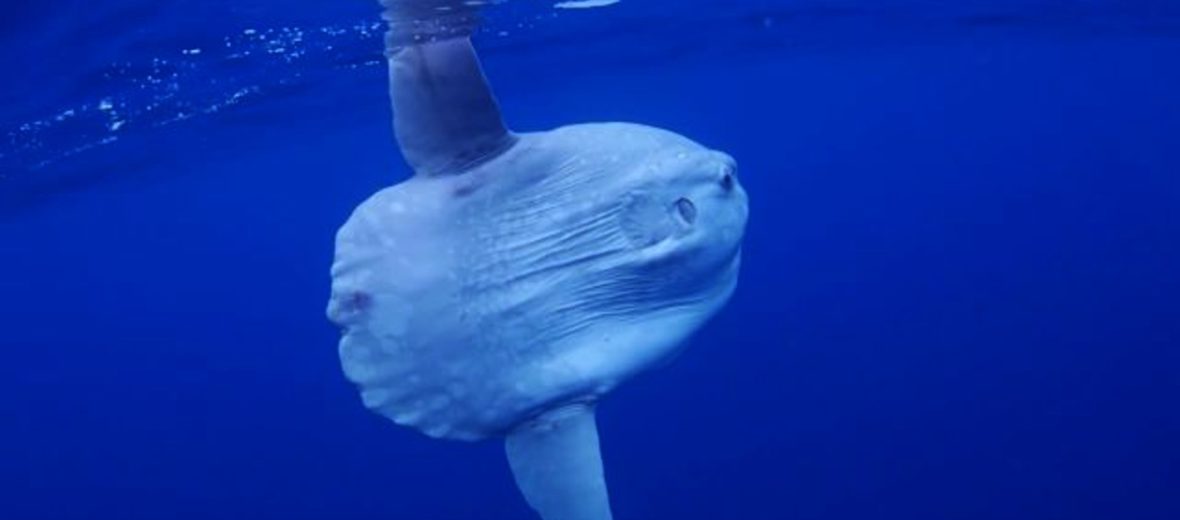
Looking like a giant fish head with flippers, the ocean sunfish, aka mola mola, is a testament to how strange ocean creatures can be. Their closest relatives are the triggerfish and the puffer fish. Even though they are the heaviest known oceanic fish, they were once thought to be a form of plankton. It was believed that they were not capable of swimming against the ocean’s currents. It was later proven that they can swim independently of the currents and thus they were categorized as bony fish. These huge beasts are listed as Data Deficient, by the IUCN, due to the lack of accurate information on their numbers.
First the Stats…
Scientific name: Mola mola
Weight: Up to 5,100 lbs.
Length: Up to 6 feet
Lifespan: Up to 100 years
Now on to the Facts!
1.) Basking in the sun, just under the water, is an activity that takes up half of their day.
2.) “Mola mola” is Latin for “millstone,” making reference to their gray color and rounded shape.
3.) Yep, you read that right. These giants can weigh up to 5,100 lbs! That’s as much as an SUV.
4.) Ocean sunfish can dive over 2,600 feet deep, in search of prey.
5.) Like triggers and puffers, the sunfish’s teeth are fused together to form 2 sharp plates.
But wait, there’s more on the ocean sunfish!
6.) Polynesians call the sunfish “King of Mackerel.” It has long been considered to be bad luck to kill a sunfish, for fear that it will cause a decline in mackerel coming to the islands.
7.) Ocean sunfish can host up to 50+ different types of parasites! There have been many documented cases of sea birds landing on sun bathing Mola molas and picking off the parasites for a light snack. Yummy.
Did you know…?
The ocean sunfish can only swim up to 2 mph. with bursts of up to 10 mph! Some burst.
8.) Sunfish have a tendency to lay more eggs than any other vertebrate. Females produce up to 300,000,000 eggs at one time!
9.) Their chief predators are great white sharks, orcas, and sea lions.
10.) These beasts do not have a swim bladder, but instead have a layer called subcutaneous jelly which helps keeps them neutrally buoyant.
But wait, there’s still more on the ocean sunfish!
11.) Molas have merely 16 vertebrae. This is the fewest of any known vertebrate.
12.) Schwimmender Kopf is the German name for ocean sunfish. It means swimming head.
Did you know…?
During the 1600s and 1700s, shoguns from Japan used Mola molas as payment for their taxes.
13.) Besides predation from sharks, killer whales, and sea lions, bycatch is their largest threat. One year alone, an African fishery caught an estimated 340,000 molas!
14.) They eat small fish, sea sponges, squid, crustaceans, brittle sea stars, and jelly fish. Lots and lots of jellyfish.
15.) Sunfish have a thick layer of mucus that coats their body and lines their digestive tract. This helps prevent them from being stung by jellyfish.
Now a Short Ocean Sunfish Video!
Also, check out the Critter Science YouTube channel. Videos added frequently!
Want to suggest a critter for me to write about? Let me know here.



